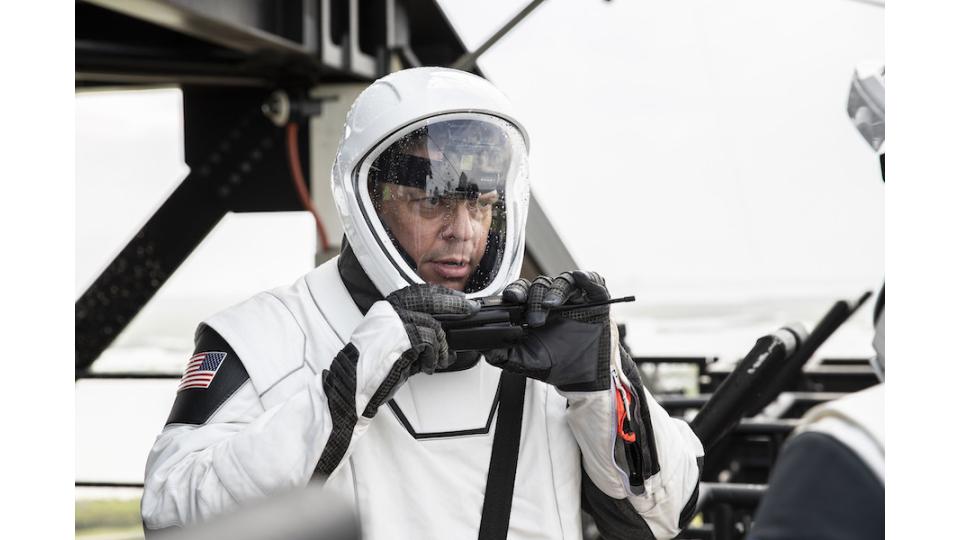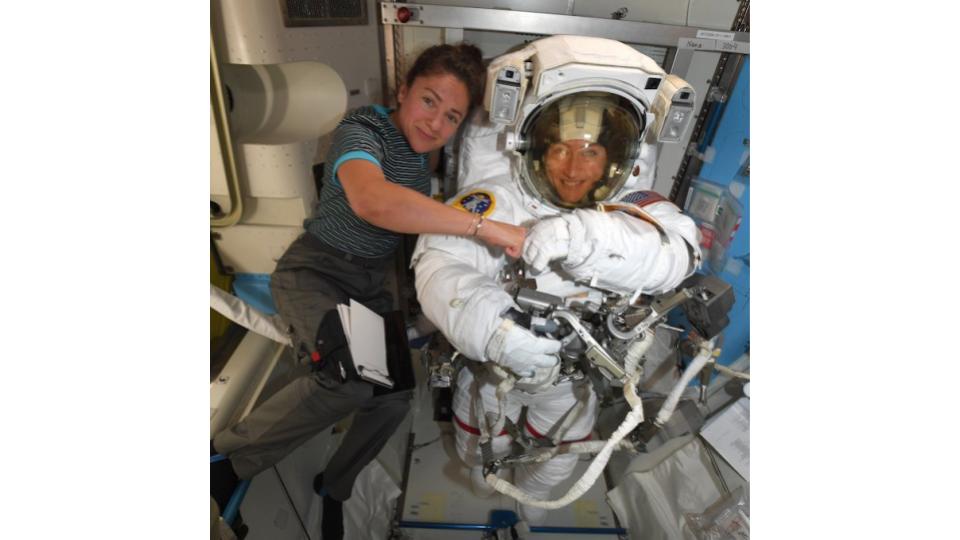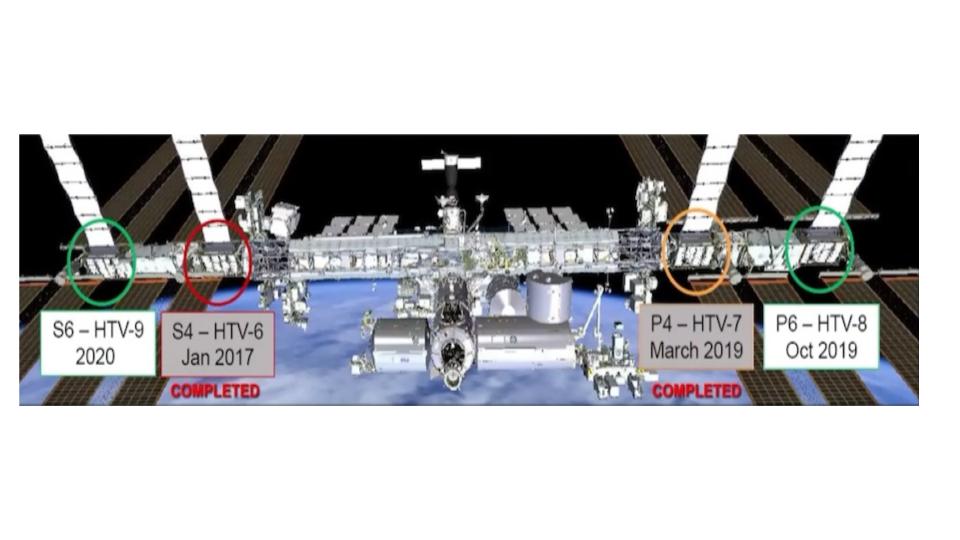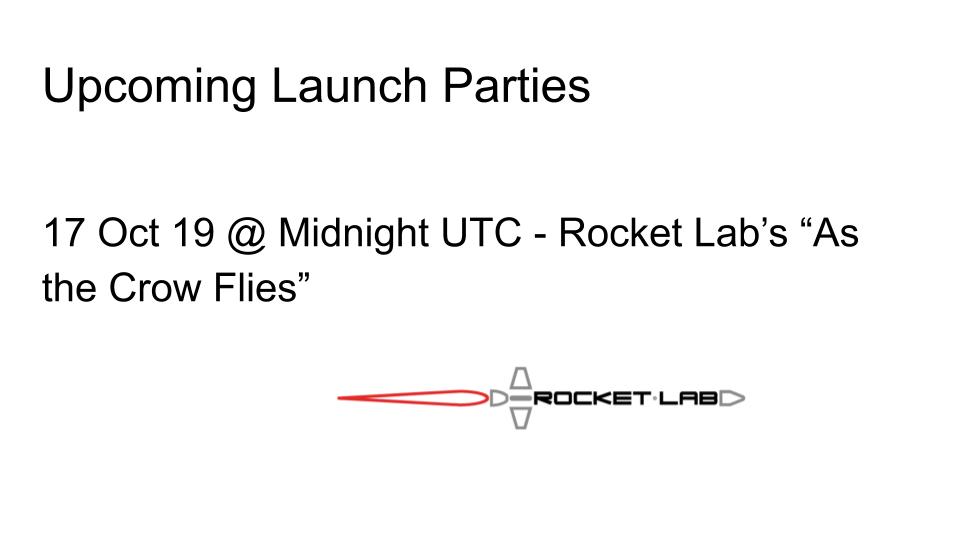NASA astronauts sent to ISS on SpaceX Crew Dragon may stay longer than planned. Ten spacewalks in 3 months, including the 1st all female spacewalk (for real this time!)
Transcript
This is the Daily Space for today, Tuesday, October 15, 2019. I am your host, Annie Wilson, and I am here to put science in your brain.
I’m going to be changing up the format a bit. Rather than reporting on both the launches that have happened and the launches that will happen, I’m going to report more in depth on the launches that happened and just mention the upcoming launches. Launches are tricky things and sometimes launch dates slide. Rather than repeatedly reporting on sliding launches, I’m just going to give you all a heads up on when to tune in at the end of the episode. This will also allow us to have more time to report on *just* launches.
Astronauts may be asked to spend longer than originally planned at the ISS during SpaceX’s 1st Crew Dragon Mission
- NASA may ask SpaceX to extend duration of Crew Dragon test flight (Spaceflight Now)
- Boeing reveals target dates for initial Starliner test flights (Spaceflight Now)
- NASA chief hopeful SpaceX could launch piloted Crew Dragon test flight in early 2020 (CBS News)
- Douglas G. Hurley (Wikipedia)
- Robert L. Behnken (Wikipedia)
Since the retirement of the Space Shuttle in 2011, NASA has been reliant on Russian Soyuz rockets to send their astronauts to the International Space Station. This comes at a cost – currently, about 86 million USD per seat. NASA had hoped that by this point in time at least one of the commercial crewed flight programs by Boeing or SpaceX would be operational, thus ending the need to pay for seats on the Russian craft. Unfortunately several developmental & organizational delays have pushed the first crewed flights back by as much as a year.
Since the retirement of the Space Shuttle in 2011, NASA has been reliant on Russian Soyuz rockets to send their astronauts to the International Space Station. This comes at a cost – currently, about 86 million USD per seat. NASA had hoped that by this point in time at least one of the commercial crewed flight programs by Boeing or SpaceX would be operational, thus ending the need to pay for seats on the Russian craft. Unfortunately several developmental & organizational delays have pushed the first crewed flights back by as much as a year.
NASA administrator Jim Bridenstine, during a tour of SpaceX’s facility, struck an optimistic tone, saying that the first Crew Dragon may be able to launch early next year, and confirmed that NASA may ask SpaceX’s assigned NASA astronauts Bob Behnken and Doug Hurley to stay longer at the ISS than originally planned. This will ensure USA manning remains at expected levels while removing the need to purchase more Russian seats. Bridenstine had the following statement (and I quote): “If everything goes according to plan, we may not need additional Soyuz seats. I will say we’re getting very close and we’re very confident that in the first part of next year we’ll be ready to launch American astronauts on American rockets.” (End quote)

Currently NASA has just one more seat booked on a Soyuz, which will be aboard Expedition 62S, due to launch in March of next year. If for some reason SpaceX’s 1st crewed flight is delayed, NASA may be forced to contract for more seats, which will cost the agency almost as much per astronaut as SpaceX charges for an entire brand new Falcon 9 launch. Boeing’s first crewed Crew Space Transportation 100 Starliner mission will launch on a United Launch Alliance Atlas V with a 3-person crew. This too has been delayed by funding & developmental issues: that mission was originally scheduled for this past August, but is now postponed until next year. The company recently scheduled its 1st uncrewed flight of the Starliner to the ISS for Dec. 17th of this year.
Astronauts Hurley & Behnken have both been to space before, having flown previously aboard the Space Shuttle. Hurley flew aboard Space Shuttle Atlantis in July of 2011, the last of NASA’s shuttle missions (STS-135). Behnken also flew two missions, both aboard the Endeavor, and was assigned to potential mission STS-400 (also Endeavor) which was on standby in case Atlantis suffered an emergency during its final flight.
(Behnken = STS-123, STS-130 both w/Endeavor | Hurley = STS-127 Endeavor, STS-135 Atlantis, final STS flight)
Next up: “It’s spacewalk season!” on the International Space Station. 10 spacewalks have been scheduled during the next three months.
- First all-female spacewalk on tap later this month (Spaceflight Now)
- The first all-female spacewalk is scheduled for this week (CNN News)
- NASA Is Canceling Its All-Female Spacewalk Due to Ill-Fitting Spacesuits (Older article from Mental Floss about previously scheduled spacewalk)
NASA reports that this many EVAs have not been accomplished in such a short time span since ISS construction was completed. Three of those spacewalks have already been completed and astronauts aboard the ISS are gearing up for the fourth.
The fourth of this set of 10 spacewalks also happens to be the first all-female spacewalk on record! It is scheduled to take place either Thursday October 17 or Friday October 18 as Christina Koch and Jessica Meir will suit up for the 4th of five total EVA’s intended to replace the ISS’s aging nickel-hydrogen battery packs with newer lithium-ion packs that arrived onboard JAXA’s HTV-II “Kounotori” module last month. The new packs are smaller, lighter & are able to hold twice the charge of the older batteries, meaning the 48 older battery cells will be replaced by 24 of the newer cells. These will be fitted with jumpers to bypass the cells which will not be replaced. Meir will become the 14th American woman, & the 15th woman overall to perform a spacewalk; Koch became the 14th woman to make a space walk back in March when she took part in an EVA w/ fellow American Nick Hague, who replaced Anna McClain due to an issue involving available EVA suits.

Credit: NASA/Christina Koch
So, let’s talk about that for a second. There was some controversy over this older spacewalk which would have been the 1st all-female spacewalk. Months ago this all female spacewalk was really hyped up. It was never planned to be the first all-female space walk and the timing was coincidental with International Women’s Day. In fact, officials from NASA pointed that the first all-female spacewalk wasn’t supposed to happen until October.
That spacewalk simply didn’t happen because McClain had discovered during an EVA that she was more comfortable in a medium torso. At that time, there was only one medium torso available. The EVA suits *are* adjustable, but the procedure to modify one of the large torsos to a medium torso could have taken up to 12 hours to perform. Given the already-full schedules of the astronauts aboard, there really wasn’t time to adjust a large torso to a medium without falling behind on other tasks. So, McClain demurred to Hague for the sake of getting that walk’s much needed work accomplished.
Koch was recently interviewed and had this to say about the situation: “That spacewalk that had originally been planned to be conducted by Anne McClain and myself was not canceled, it still happened with a different crew to make sure we matched the spacesuit sizes and conducted that spacewalk as safely as possible to get the mission done.”
“We currently do happen to have two medium spacesuits on board now. … Jessica and I both have trained throughout our six years together in the sizes that are available on board right now,” she said.
Okay, now that I’ve refreshed your memory on that, let’s talk about the details of this upcoming spacewalk.

Credit: NASA
To swap the batteries on the P6 truss, Meir and Koch will have to travel quite a long way down the width of the station’s main truss, which measures in at about the length of an American – or European – football field (~110 m / ~120 yds). Additionally, they will be out of reach of Canadarm and will have to move both the replacements & the replaced modules without its assistance. This means the spacewalks servicing the P6 truss will need quite a bit more time than the spacewalks to service either of the first two sets of batteries did.
This is the latest in a series of spacewalks dedicated to replacing the aged battery packs that has been going on since 2017. The last set to be replaced is on the starboard S6 truss — the opposite end of the station from P6 — and are scheduled to be replaced early in 2020.
Meir and Koch are scheduled to start their spacewalk at 7:50 a.m. Eastern Time Thursday, Oct. 17 or Friday, Oct. 18.
We’ll keep you posted about the upcoming spacewalks!

- Rocketlab Next Flight “As the Crow Flies” (Rocketlab USA)
- “As the Crow Flies” stream (Rocketlab USA)
The upcoming launches for this week are:
- October 17, 2019 @ Midnight UTC (8 pm ET) – Rocket Lab’s “As the Crow Flies” (streaming live on Cosmoquestx Twitch with Annie!)
- October 17, 2019 @ Unknown Time- China is launching a Long March 3B carrying the TJSW-4 mission (likely no video feed available live)
And that rounds out our show for today.
Thank you all for listening. The Daily Space is produced by Susie Murph, and is a product of the Planetary Science Institute, a 501(c)3 non profit dedicated to exploring our Solar System and beyond. We are made possible through the generous contributions of people like you. If you would like to learn more, please check us out on patreon.com/cosmoquestx
Each live episode of the Daily Space is archived on YouTube. If you miss an episode here on Twitch.tv, you can find it later on youtube.com/c/cosmoquest. These episodes are edited and produced by Susie Murph.
We are here thanks to the generous contributions of people like you who allow us to pay our staff a living wage. Every bit, every sub, and every dollar committed on Patreon.com/cosmoquestx really helps. If you can’t give financially, we really do understand, and there are other ways you can help our programs. Right now, the best way you can help is to get the word out. Let you friends know, share our channel to your social media, or leave a recommendation. You never know what doors you are opening.
We really wouldn’t be here without you – thank you for all that you do.


 We record most shows live, on Twitch. Follow us today to get alerts when we go live.
We record most shows live, on Twitch. Follow us today to get alerts when we go live.